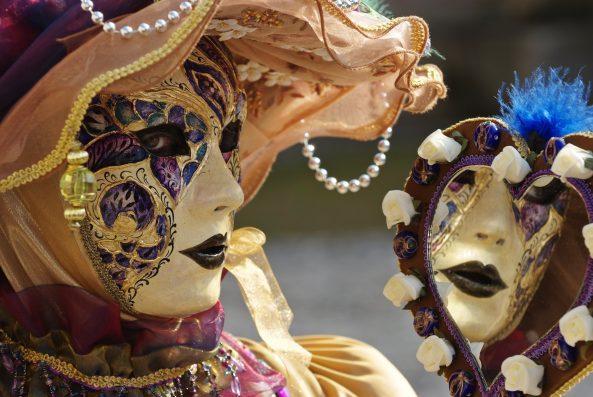People Have Sought Flawless Skin For Centuries, But One Popular Skin-Whitening Product Known As Venetian Ceruse Was The Most Toxic Makeup Ever Marketed

Beauty trends have come and gone throughout history, but one that has persisted through the centuries is the idea of having flawless skin, and cosmetics were used to achieve that.
Venetian ceruse, for instance, was a widely popular skin-whitening product that covered imperfections and made the skin look smoother and more youthful. The translucent powder could be mixed with pigments and act not only as a concealer but as a lip and cheek tint when vermillion was added.
It was marketed from the sixteenth century to the nineteenth century until it was finally replaced with less toxic alternatives. Because you see, the benefits of Venetian ceruse came with severe disadvantages.
Venetian ceruse contained white lead blended with vinegar and water. Even though only small amounts of lead were found in the product, those who applied it every day slowly became poisoned.
Some symptoms that arose from using Venetian ceruse included hair loss, abdominal pain, nausea, cognitive decline, and in some cases, even death. Additionally, the product caused peeling and scarring of the skin that could only be covered up with a thicker layer of ceruse, creating a vicious cycle.
Although the toxic properties of lead were not fully understood at the time, women knew that Venetian ceruse could have harmful effects on their health, yet they continued to use it anyway. Many notable female historical figures were known to have used Venetian ceruse.
A London socialite named Maria Coventry passed away at the age of 28, and it was said that ceruse was the cause of the famed beauty’s early death.
Queen Elizabeth was also a frequent user of Venetian ceruse. During the Elizabethan era, women desired to have white skin as it represented youthfulness and suggested that the wearer was of a high social class.
In 1562, Queen Elizabeth contracted smallpox, which left permanent scars on her face and ruined her fair complexion. To hide the damage the smallpox caused, she painted her face with ceruse.

Photo 4664962 © Jakezc – Dreamstime.com – illustrative purposes only, not the actual person
Some historians believe that the Queen died from lead poisoning. Apparently, she had displayed symptoms before her death that were similar to those of lead poisoning, such as memory loss, irritated skin, fatigue, hair loss, and nausea.
Finally, the venomous Venetian ceruse stopped being used in the 1800s. Nowadays, with advanced science and safety regulations, cosmetic products tend to be free of toxic ingredients. But still, it does make you wonder what’s really in your makeup and if wearing it is worth the price.
If true crime defines your free time, this is for you: join Chip Chick’s True Crime Tribe
The All-White Sofa Isn’t As Great As Everyone Makes It Out To Be
Sign up for Chip Chick’s newsletter and get stories like this delivered to your inbox.
More About:Freaky